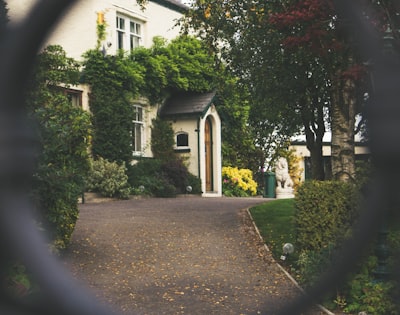If you have an insurance client who lives in a rural area, then they might have more than one building on their land. A damaging event might impact these assets as much as they would impact anyone’s house. Therefore, your client might want to contact their insurer to see if they have coverage for the damage in question. You might be able to help them if their policy contains other structure or detached structure insurance. Here’s how this policy can work to their benefit. 
Gazebos, fencing, detached garages, storage sheds—they might all dot someone’s land, and they all have an insurable value. Make sure your clients know how this coverage will (and won’t) assist them in case a claim occurs.
What Is Other Structures Coverage?
Some people think that homeowners insurance will only apply to their house itself. This isn’t exactly true. Yes, most policies cover dwellings. However, more comprehensive policies cover a property in wide-ranging ways—and insuring property is about more than insuring a house. That’s a big point to impress on your client.
In many cases, a homeowners policy can apply to assets from one end of a client’s property line to another. So, it doesn’t stop at their front door. It can cover both possessions and other structures on the property.
Other structures coverage is often an integral part of any home insurance policy. It is coverage that applies to buildings and construction that are not part of a house itself.
What Structures Does This Policy Cover?
Different insurers will offer different types of detached structures coverage. However, they will commonly cover such structures as:
- Pools (in-ground only, above-ground pools might not have coverage)
- Detached garages and carports
A customer who lives on a rural property might have many of these assets on their property. Therefore, by checking their policy to see if there’s a detached structure coverage component (sometimes called Coverage B), a customer can see to it that they have coverage available for these buildings. However, there might be limitations to how much assistance that your standard policy limits can provide.
The Limits Of Other Structures Coverage
As with all parts of a homeowners policy, there will be limitations on when, and how much, detached structure coverage will pay your clients.
- Most detached structure coverage have limits that are a percentage of the total dwelling insurance. So, if a house is insured for $250,000, the basic maximum limit of a detached structure policy might be $25,000 (10% of the total dwelling coverage). Therefore, it might be hard to replace multiple structures using this coverage. However, clients can generally increase this limit.
- A deductible will likely apply to a client’s cost obligations following claims. The client will likely have to pay this cost before the insurer will cover their claim.
- Usually, a detached structure cannot be used for business to qualify for coverage under a home insurance policy. For rural property owners who own an agricultural business, this may disqualify certain buildings from coverage.
- Policies will only cover certain damage — such as that from fires, severe weather, theft or vandalism. Not all types of damage — such as damage from pest invasions — will have coverage. Usually, damage must qualify as unavoidable and unpreventable.
- Some policies will pay actual cash value for the damage to an item. This might not be the full replacement cost of a building, but rather the depreciated value of the building at the time of the damage.
Other limits will exist on how much insurers will pay for a client’s detached structure damage. It’s your job to make sure the clients will understand where detached structure policy can help you out. If you understand what structures they have on their property, then you can make changes to their coverage appropriately.